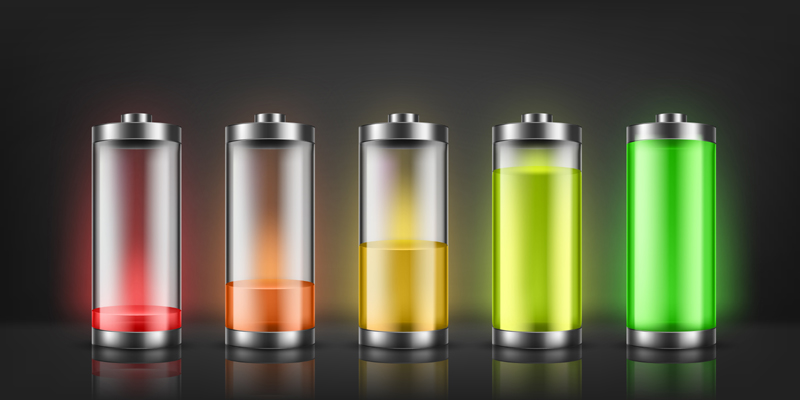Using a charger is the most safe and effective way to charge lithium ion battery. Chargers are specially designed with right amount of current and voltage to avoid overheating battery. As a result, it is always advised to always carry your charger. What happens if you misplaced or forgot your charger? Worry not. We have given you proper guideline on how to charge your lithium ion battery without a charger.
6 Best Method to Charge Your Battery Without a Charger in Emergency Situation
1. Use USB Port
Universal serial bus (USB) is the most immediate way to charge your battery without a charger. It is equally effective and safe as the normal charger. All you need is a USB cable and host device. Host device in this case is the source of power. More often than not, host devices used are PCs, printers, car radios and cameras and power banks among others.
To charge your battery, connect the larger end of the cable to the port on your host and the smaller end to the devise being charged. Note that, standard USBs can only charge one single cell small lithium ion battery at a time. This is because USB port releases a maximum current of 500Ma.
Safety Warnings
- Do not charge a device that draws more than 500mA current. This will exceed the port current limit, dropping your host’s voltage which might lead to a system failure.
- Do not charge more than one battery at the same time. USB hub can only charge a single cell li-ion battery at a time. More than one will overload and endanger it.
2. Use An Alternative Energy Source
This is another effective way to charge Li- ion battery without a charger. Alternative energy source means: you can buy a solar enabled charger which costs as little as 15$. These chargers, however, are bulky and not suitable to carry around.
There is a second alternative energy source known as a hand crank charger. More often, these chargers are used during power outrage as an alternative source of power. They are bulkier than solar chargers.

3. Charge From An Open Source Dc Electricity Or Meter
You can charge your Li-ion battery directly from an open DC electricity source. How? At first, study and understand your battery’s voltage and that of your source. This is to determine the right resistor needed to generate current flow. Use the resistor to connect your battery to the source. This allows current flow from the source to your battery. You also require a small light bulb as your regulator to limit excess current flow which might damage your battery.
Safety warnings.
- Ensure to use the right current regulator. Wrong regulators will not limit excess flow of current which might damage your battery.
- Always wear eye protectors to protect your eyes from possible sparks.
- Wear face mask to prevent inhaling harmful fumes.
- Do not leave the charging battery unattended. It might overcharge damaging your battery.
4. Charge From Another Battery
You can also charge your battery from another battery. This is possible through connecting multiple batteries in a ‘series’ arrangement. You need to:
- Take three AAA batteries and connect them in a series arrangement. This arrangement allows each battery to produce 1.5 voltages. The number of batteries used will depend on total voltage required to charge the recipient battery. For instance, a standard cellphone battery requires a total of 3.7v to be charged fully. Therefore, you should connect 3 batteries in a series arrangement to generate 4.5 v. i.e. 1.5v + 1.5V + 1.5v=4.5 v.
Safety Warnings
Do not use too much voltage to charge your battery.
5. Charge From A Bench Supply
Bench supply is another effective way to charge lithium ion batteries. To charge with this instrument, you need to turn the voltage and current knob to the left, hook it to the recipient battery (being charged) and turn power supply on.
Safety Warnings
- Make sure the knobs do not exceed 500mA current flow towards your battery.
- Ensure you connect respective wires to their correct sockets so to avoid damaging your battery.
6. Charge From A Car Battery
It is also possible to charge lithium ion batteries by connecting it to lead acid car batteries. During the process, the use of small light bulbs is crucial. These bulbs help to regulate the current flow.
When charging 6V camera battery with 13V lead acid battery, you should use three small light bulbs connected in a parallel arrangement. This will allow 0.5 amperes flow towards your camera battery for appropriate charging. There are also various types of direct car lithium ion battery chargers and protectors in the market today.
Safety Warnings
- While charging, do not leave your battery unattended.
- Wear protective masks to avoid inhaling harmful fumes or eye damage from possible sparks.
Final Say
Lithium ion batteries are made of highly flammable electrolytes. That means they are prone to danger when not properly charged. When charging, follow the following measures;
- Do not overstore a dead battery. Make sure you recharge it within a day after full discharge.
- Do not charge your battery in an environment below 4 degrees Celsius to avoid chemical reactions that may cause damage or explosions.
- Avoid chargers or alternative charging methods that generate higher voltage than the recipient battery.
- Do not expose the battery to liquid, precisely salty liquid. This might cause corrosion.
